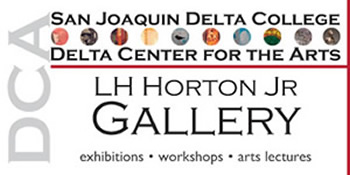Film by Writer and Director Lynn Hershman Leeson
www.womenartrevolution.com
Showing at San Joaquin Delta College
Tillie Lewis Theatre
March 26 ~ 12:30pm
Free and Open to the Public
— Selected by the Museum of Modern Art New York as one of the 3 best documentaries of the year!
— !W.A.R. is more than a history of a revolutionary social, cultural, and artistic movement. It's also a curatorial coup with an innovative format that provides a permanent home for women's art — past, present, and future.
–Penelope Andrew, The Huffington Post, May 31, 2011
— Ms. Hershman Leeson’s documentary sets out to correct the historical record and goes further, making the case that feminist art — varied, messy, conflicted and engaged with the times — is at the very center of that history.
–Rachel Saltz, The New York Times, May 31, 2011.
Over the last three decades, artist and filmmaker Lynn Hershman Leeson has been internationally acclaimed for her pioneering use of new technologies and her investigations of issues that are now recognized as key to the working of our society: identity in a time of consumerism, privacy in a era of surveillance, interfacing of humans and machines, and the relationship between real and virtual worlds. She was a recipient of the 2010-2011 d.velop digital art and 2009 SIGGRAPH Lifetime Achievement Awards. Hershman also received the 2009 John Simon Guggenheim Memorial Foundation Fellowship, an award that supported her documentary film !Women Art Revolution.
For over forty years, Director Lynn Hershman Leeson has collected hundreds of hours of interviews with visionary artists, historians, curators and critics who shaped the beliefs and values of the Feminist Art Movement and reveal previously undocumented strategies used to politicize female artists and integrate women into art structures.
!Women Art Revolution elaborates the relationship of the Feminist Art Movement to the 1960s anti-war and civil rights movements and explains how historical events, such as the all-male protest exhibition against the invasion of Cambodia, sparked the first of many feminist actions against major cultural institutions. The film details major developments in women’s art of the 1970s, including the first feminist art education programs, political organizations and protests, alternative art spaces such as the A.I.R. Gallery and Franklin Furnace in New York and the Los Angeles Women’s Building, publications such as Chrysalis and Heresies, and landmark exhibitions, performances, and installations of public art that changed the entire direction of art.
New ways of thinking about the complexities of gender, race, class, and sexuality evolved. The Guerrilla Girls emerged as the conscience of the art world and held academic institutions, galleries, and museums accountable for discrimination practices. Over time, the tenacity and courage of these pioneering women artists resulted in what many historians now feel is the most significant art movement of the late 20th century.
Carrie Brownstein composed an original score to accompany the film. Laurie Anderson, Janis Joplin, Sleater-Kinney, The Gossip, Erase Errata and Tribe 8 are some of the gifted musicians who contributed to the W.A.R. soundtrack.

